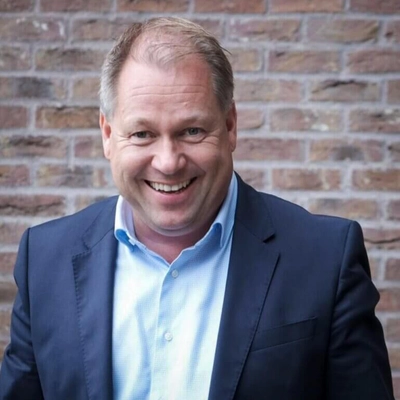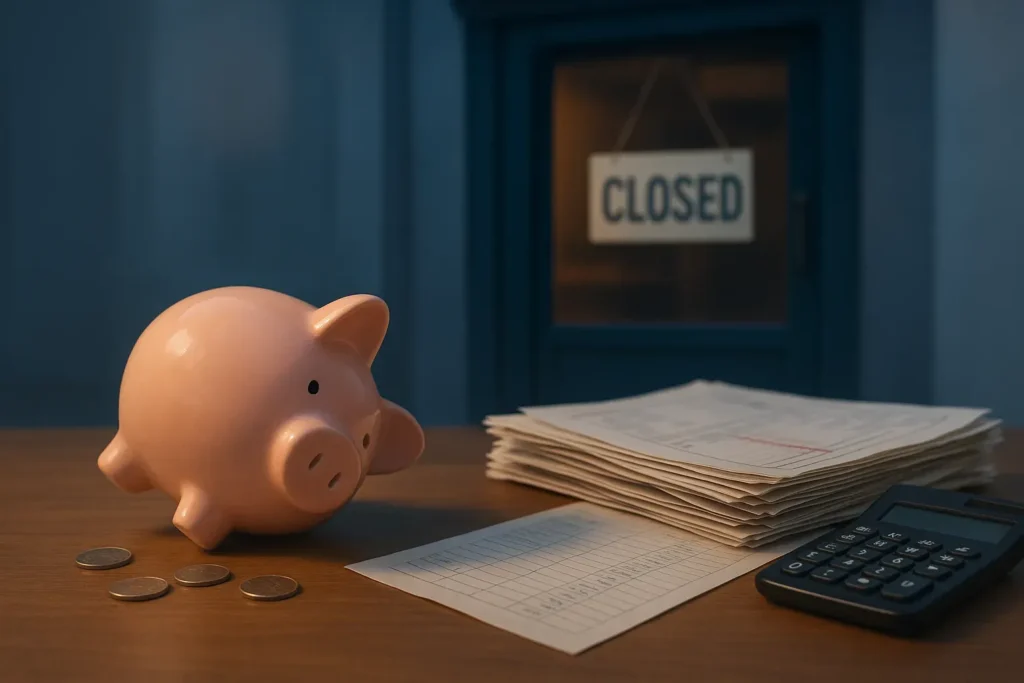Entrepreneurs face numerous financial pitfalls that can derail even the most promising ventures, as highlighted by leading financial advisors and successful business owners. This comprehensive guide examines 18 critical mistakes that can impact business sustainability, from cash flow mismanagement to improper pricing strategies. Financial experts emphasize that avoiding these common errors creates a foundation for sustainable growth and long-term entrepreneurial success.
- Prepare Two Financial Models For Funding
- Design Deals for Predictable Cash Conversion
- Cash Flow Forecasting Prevents Business Failure
- Validate Demand Before Building Product Features
- Not All Revenue Creates Equal Business Value
- Monitor Timing Between Expenses and Income
- Conservative Financial Plans Support Sustainable Growth
- Sustainable Growth Requires Cash Flow Discipline
- Define Clear Outcomes Before Making Hires
- Strategic Spending Can Outperform Excessive Saving
- Separate Business and Personal Financial Accounts
- Secure a Buffer Before Reinvesting Profits
- Customer Retention Trumps Acquisition Every Time
- Price Services Based On Value Not Cost
- Prove People Will Pay Before Marketing
- Focus on Marketing Channels With Fast Payback
- Financial Forecasting Prevents Cash Flow Emergencies
- Smart Reinvestment Accelerates Business Growth
Prepare Two Financial Models For Funding
My biggest financial mistake? Betting everything on a single source of funding without having a Plan B. I watched one of my early ventures nearly collapse when an “almost certain” investor deal fell through at the last minute. We had already ramped up hiring and locked in vendor commitments based on capital we didn’t actually have in the bank yet.
The lesson hit hard: investors and lenders say no far more often than yes, and even when they say yes, deals take 3-6 months longer to close than anyone expects. We had maybe 45 days of runway left when that deal died, and scrambling to find bridge financing while trying to run the business was brutal.
Now I advise every entrepreneur to build two completely separate financial models — one for if funding comes through, and one for bootstrapping if it doesn’t. The bootstrap version forces you to focus on revenue generation from day one instead of assuming capital will solve everything. I’ve seen too many startups die not because the business model was bad, but because they ran out of cash waiting for a check that never arrived.
The other piece: if you do get funding offers, take the money when it’s available and keep reserves. You can’t raise capital when you’re desperate — only when you don’t need it. That psychological shift in how investors perceive you makes all the difference.

Design Deals for Predictable Cash Conversion
I once scaled a new services line on the back of a single enterprise win and let the contract terms dictate our cash reality.
The deal looked strong on paper and the revenue was real, so I hired ahead for delivery, committed to a few long-lead tools, and moved quickly to keep the customer impressed. Their paperwork set net 90 on the first milestone, acceptance was tied to a sign-off from two different departments, and changes to their data feed required approvals that lived outside the project team. We floated payroll on a line of credit while waiting for signatures that kept slipping, interest costs piled up, and my time shifted from growing the business to chasing an internal process I didn’t control.
The work was good and the client was happy, but the cash conversion cycle was upside down, which meant the business carried the risk and the stress every single week.
What I learned changed how I finance growth.
Before staffing up, I now run a 13-week cash forecast that shows when money comes in and goes out, and I will not start without a mobilization fee or milestone that clears within the first thirty days. Every statement of work includes plain language acceptance criteria, a single accountable signer, and a billing schedule that maps to the effort curve rather than to their budget cadence, and I pair that with a stop-work clause for missed approvals so the team is never subsidizing someone else’s delays.
On the vendor side, I align payment terms to the receivables timing and avoid fixed commitments that extend past the first two milestones, and when the counterparty is new, I ask for references from their finance team because past pay behavior predicts future pay behavior better than enthusiasm in a kickoff call.
The takeaway for other founders here is simple… to act on even if it feels uncomfortable in the moment: design the deal so cash turns early and predictably; write the operating rules — who signs, what done means, and when invoices go out — into the contract; and watch your 13-week cash view every Friday, because discipline on these three steps protects both your team and your runway while you grow.

Cash Flow Forecasting Prevents Business Failure
One of the biggest financial mistakes I made early in my entrepreneurial journey was underestimating the importance of cash flow forecasting. I focused too heavily on revenue growth and profitability metrics, assuming that positive margins meant the business was financially healthy. However, when client payments were delayed and expenses piled up, I realized that profitability doesn’t equal liquidity.
The key takeaway for other entrepreneurs is simple: cash flow is the lifeblood of your business. Always maintain a rolling forecast of inflows and outflows, set aside emergency reserves, and monitor your accounts receivable closely. Even a profitable business can struggle — or fail — if cash isn’t managed carefully. Understanding and anticipating cash gaps allows you to make smarter financial decisions, negotiate better terms, and sustain long-term growth.

Validate Demand Before Building Product Features
In the beginning, I made a classic but painful financial mistake: spending money building out features, long before I validated real demand. I spent resources creating advanced modules, sleek user interfaces, AI-driven algorithms, and thorough integrations that would help students and parents fall in love with our offering, before using data to know which ones actually moved the needle.
With hindsight, the result is predictable. We wasted months and valuable capital building features that were irrelevant while the essentials like marketing, support, and core content were starving for resources. What I learned for sure is that the saying holds true: ideas are cheap, but validated demand is gold.
And here is my advice to other founding teams. When you have an idea and you think it is ready to be scaled or built out, build it small first. Test the concept, and even if you are imperfect with it, allow real “users” to show you what they will value based on their actions, not their words. When something proves worth it, that’s when you scale it.
This way of thinking changed everything about our building philosophy. Rather than producing entire products we think a student will want, we produce minimal prototypes, engage with our users, and determine their engagement behavior to guide building an improved prototype. It keeps us lean, focused, and aligned on what matters.
In business, passion moves you forward, but humility protects your runway. Validate early, fail fast, and invest where the data earns your confidence.

Not All Revenue Creates Equal Business Value
One mistake I made early on was saying “yes” to every client in the name of revenue. It felt smart at the time: more clients meant more cash flow. But over time, that approach stretched the team thin. The short-term gain came with hidden costs: burnout, scope creep, and uneven profitability.
What I learned is that not all revenue is created equal. A client who doesn’t align with your process or values often costs more in time and energy than they bring in money. Once I started tracking profitability per client, it became obvious that a few “yes” projects were eating into margins that good-fit clients had built.
Now, we use a simple filter before taking on new work — fit, clarity, and lifetime value. If one of those fails, it’s a no, even if the project looks lucrative. Saying no became the most profitable decision we made because it protected focus, team energy, and sustainable growth.

Monitor Timing Between Expenses and Income
Early in my entrepreneurial journey, I made a costly mistake by underestimating how quickly marketing and operational expenses can multiply when revenue starts growing. I was excited by increasing sales and reinvested aggressively, but I wasn’t tracking cash flow timing properly. While sales numbers looked strong on paper, our actual liquidity position tightened faster than I anticipated.
The lesson I learned was straightforward but critical: growth doesn’t pay bills — cash flow does. This fundamental truth has transformed how I manage finances in all my ventures. Today, every business I run maintains a rolling 6-month cash forecast with specific triggers that alert us when expenses start outpacing actual cash inflows. This isn’t about being overly cautious or slowing growth; it’s about maintaining control while scaling rapidly.
If you take only one thing from my experience, remember that your business needs a clear system to monitor the timing difference between when money goes out and when it comes in. Even profitable companies can fail when they run out of cash during growth phases.

Conservative Financial Plans Support Sustainable Growth
One financial mistake I made early on as an entrepreneur was underestimating the ongoing costs of scaling a business. I focused heavily on initial expenses — equipment, setup, marketing — but didn’t fully account for the rising operational costs as growth accelerated. Payroll, technology upgrades, and even seemingly small recurring expenses quietly piled up, squeezing cash flow tighter than I anticipated.
The lesson? Always build your financial plans with conservative projections that factor in not only growth but also the compounding costs that come with it. It’s vital to have a realistic understanding of your burn rate and ensure you maintain a healthy cash reserve — not just for emergencies but to support sustainable scaling. Being transparent with your financials and revisiting your budget regularly helps catch early warning signs before they become crises.
For others, prioritize financial discipline as a core leadership capability. Financial health isn’t just about revenue — it’s about managing costs smartly, investing wisely, and having the agility to adjust quickly. That mindset helps entrepreneurs avoid painful surprises and keep the business on solid footing as it grows.

Sustainable Growth Requires Cash Flow Discipline
One of the biggest financial mistakes I made early on as an entrepreneur was confusing revenue growth with financial health. I assumed that as long as the top line was climbing, everything else would eventually balance out. It didn’t. I scaled too quickly — hired ahead of cash flow, invested in tools we “might” need later, and celebrated big client wins without building a proper buffer for slower months. On paper, the business looked great. In reality, cash flow was gasping for air.
That experience taught me a hard but valuable lesson: profit isn’t what’s left after expenses — it’s what protects your ability to keep playing the game. Growth can actually bankrupt a business if it’s not grounded in discipline. I started treating cash flow like oxygen instead of an afterthought. Every new hire, tool, or partnership had to be justified by clear ROI, not ego or excitement.
The turning point came when I built a simple forecasting system. No fancy dashboards — just a living spreadsheet that tracked projected income, recurring costs, and cash runway. It changed everything. Decisions became clearer. The highs didn’t feel as euphoric, and the lows didn’t feel as fatal, because there was visibility and control.
The key takeaway for other entrepreneurs is this: never mistake momentum for sustainability. You can’t spend your way into stability. Growth should feel steady, not frantic. If you’re making financial decisions that depend on your next “big month,” pause and recalibrate. Your future self will thank you.

Define Clear Outcomes Before Making Hires
Early in my entrepreneurial journey, I made the financial mistake of hiring too quickly without clearly defined roles and responsibilities. Driven by a desire to grow, I assumed that adding staff would accelerate progress. Instead, hiring without a clear plan led to mismatched expectations, underperformance, and unnecessary payroll costs. For example, I once hired someone who fit our culture well, but I failed to define what success looked like in their role. After six months, we both recognized it was not a good fit, and parting ways was both emotionally and financially challenging.
The key takeaway is to hire thoughtfully and strategically. Before making a hire, clearly document the expected outcomes for the first 90 days. Take time to find the right person, and do not rush the process. Moving too quickly cost me more than money; it disrupted momentum and shifted focus from core priorities. In growth phases, ensure each hire addresses a specific need rather than simply increasing headcount.

Strategic Spending Can Outperform Excessive Saving
One of the biggest financial mistakes I made early on wasn’t overspending — it was underspending at the wrong time. I got overly obsessed with conserving runway, so I delayed hiring a senior engineer I knew we desperately needed. On paper it looked “responsible” — protect cash, extend the burn. But in reality, it was one of the most expensive decisions I’ve ever made.
Here’s why: instead of paying one highly skilled person to knock out core infrastructure in a few weeks, I strung it along with junior devs and duct-taped solutions. The result was six months of slowed product velocity, late feature releases, and a bunch of technical debt we’re still unwinding. That “savings” ended up costing multiples of the actual hire.
The lesson I took away is this: cash sitting in your bank account isn’t always safer than cash working for you. A startup’s biggest expense isn’t usually payroll or ads — it’s the opportunity cost of moving too slowly. Now, I treat strategic hires and speed-to-market like line items on a balance sheet. Sometimes the safest financial move is actually the bolder one.

Separate Business and Personal Financial Accounts
The biggest financial mistake when I was starting out as a consultant was mixing my business and personal finances. I considered this as my income rather than the business income and got into poor cashflow management habits. I had my consultant income coming into my main personal account and I would push my business expenses through it as well as my personal expenses.
When you have your personal expenses and your business expenses bundled together, it’s very hard to cashflow forecast and you can get into trouble quite quickly, as I discovered.
My key takeaway here is that if you are starting out on your entrepreneur journey and carrying on a business under your name rather than a company structure, always set up a new bank account that is completely separate from your personal bank account. All your business-derived income and expenses should go into that account. After all the expenses are paid, transfer yourself a wage to your personal bank account.
Keeping your bank accounts separate is the best thing you can do as ultimately, when you move to a company structure, the company bank accounts will pay you a wage to your personal bank account. This stops you from getting into trouble and ensures your business and personal life are clearly defined.

Secure a Buffer Before Reinvesting Profits
One of the financial mistakes I made early on was reinvesting all of our profit back into the business without securing a buffer first. I admit, I thought that reinvesting everything would result in faster growth. However, I would learn the hard way that whenever unexpected expenses would arise, like supplier delays or challenges in marketing, it put us in a tight situation and panic. That experience also taught me that profit is not secured until it’s securely saved and protected. Because of this, I now view savings as a non-negotiable cost of doing business, similar to payroll and product inventory itself. I started keeping separate inventory and reinvestment accounts to make sure that our expansion efforts wouldn’t compromise stability.

Customer Retention Trumps Acquisition Every Time
Early in my journey with my business, I made a classic mistake of obsessing over acquisition numbers. Every day, I’d look at our dashboard and get excited about new sign-ups, but I wasn’t paying nearly enough attention to the customers who were already with us.
The wake-up call came when I ran the numbers. We were spending roughly $1,000 to acquire a new customer, but losing existing customers who upgraded to our full platform and would have generated $10,000+ in lifetime value, simply because we weren’t giving them the attention they deserved. That was my perception shift as an entrepreneur.
Here’s what I learned: retention isn’t just more cost-effective than acquisition, it’s about 5-7 times cheaper in our experience. When we shifted our focus and invested in customer success initiatives, better onboarding, regular check-ins, and actually listening to feedback, our churn rate dropped by nearly 35% within six months.
When you focus on retention, your loyal customers become your salespeople. In our case, about 60% of our new business now comes from referrals and word-of-mouth from our existing customer base. These are people who genuinely believe in what we do and bring others along.

Price Services Based On Value Not Cost
Early in my career, I underpriced our services to attract more business. While this approach initially drove growth, it soon became clear that we were barely covering costs on some contracts. This limited our ability to reinvest in the business and hire the talent needed to scale. In one case, we supported a client through a major transition, but we operated at a loss because I hesitated to renegotiate. This experience reinforced the notion that pricing must reflect the value and expertise provided, rather than just competing on cost.
The key takeaway is not to undervalue your work. If you are confident in your service, price it to reflect its quality. The right clients will recognize and value the benefits, leading to sustainable business relationships. Undervaluing your services often results in costly setbacks.

Prove People Will Pay Before Marketing
Back when I first launched, I made a rookie mistake; which is pouring cash into marketing before we had proved people would actually pay. Early traction looked promising; leads were coming in but most never converted into real customers.
That’s when I realized that throwing money at the wrong problems magnifies your mistakes. It doesn’t fix them.
From that experience, I stopped spending big until retention, referrals, and funnel throughput were in the bag. In other words, make sure your foundation works before you double down on scaling. That’s saved us from having bad assumptions and it’s made every marketing dollar we invest after that far more efficient.

Focus on Marketing Channels With Fast Payback
I burned cash chasing “busy” — big booths and cold outbound because that’s what everyone did. Our CAC hit ~€38k with a 22-month payback. We killed the vanity spend, ran co-hosted webinars with radiology societies, leaned on warm referrals from existing sites, and cut blended CAC almost in half.
Lesson: don’t buy applause, buy payback. Slice CAC by channel and segment, run simple holdout tests, and move budget to what creates a qualified pipeline fast. If a euro can’t show a path to payback, it doesn’t get spent.

Financial Forecasting Prevents Cash Flow Emergencies
The company initially dedicated insufficient resources to financial forecasting at its beginning. The absence of accurate modeling led to a cash flow emergency because two major enterprise clients extended their payment terms beyond expectations. The financial crisis required us to cancel our important recruitment process and move forward with our delivery schedule.
The main lesson shows that revenue does not equal cash flow. Our company maintains forecasting as a critical process which requires continuous updates and regular assessments that support all business choices. A simple Excel model which connects receivable data to run rate information and hiring plans helps organizations avoid unexpected financial issues.

Smart Reinvestment Accelerates Business Growth
For me, one of the biggest financial mistakes I made early on as an entrepreneur was underestimating the importance of reinvesting back into my business. When I first started my business, I was cautious with every dollar, saving more than I was spending on marketing, technology, and brand development. At the time, it felt like the smart and safe move. But looking back, I realized that being too conservative slowed my growth and limited my visibility in a competitive market like San Gabriel Valley.
Every business owner, especially in real estate, needs to view smart spending as an investment, not an expense. Once I started putting more resources into quality marketing, lead generation systems, and client experience tools, I began to see real momentum. The returns didn’t just come financially; they came in the form of stronger client trust and long-term relationships.
That experience taught me that being financially disciplined doesn’t mean holding back, it means knowing where to put your money so it can create growth. Now, I always remind new agents and entrepreneurs: Don’t be afraid to invest in yourself and your business early. It’s the only way to build something sustainable.














